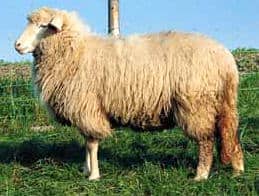Type the name of the breed you're looking for below
[wpdreams_ajaxsearchlite] Don't see the breed your're looking for? Click here and let us know!
Bavarian Forest sheep
| Place of Origin | Germany |
| Origin | The Bavarian Forest, the successor of the Bavarian Zaupel, is decreasing in popularity and appears in the Bavarian herdbook only since 1987. Nevertheless it is an old and once wide-spread breed in its native region. Also Known As: Waldschaf. |
| Purpose | Meat, Fiber |
| Characteristics | It is a small to medium sheep, mostly white, though brown and black animals do occur. The head profile is straight and the nasal bone is easily curved with the male animal. The ears are away horizontally or easily hanging. The animals are fine-linked with very hard claws. The male animals are frequently horned. |
| Other Considerations | The fleece contains a mixture of fibers: kemp, hetero type, and wool fibers. Forest sheep are a-seasonal. They usually lamb 3 times in 2 years. Their fertility amounts to about 180 percent. They are a hardy, weather and disease-resistant breed. They have good mothering ability. Breed category: rare, landrace, double-coated |



